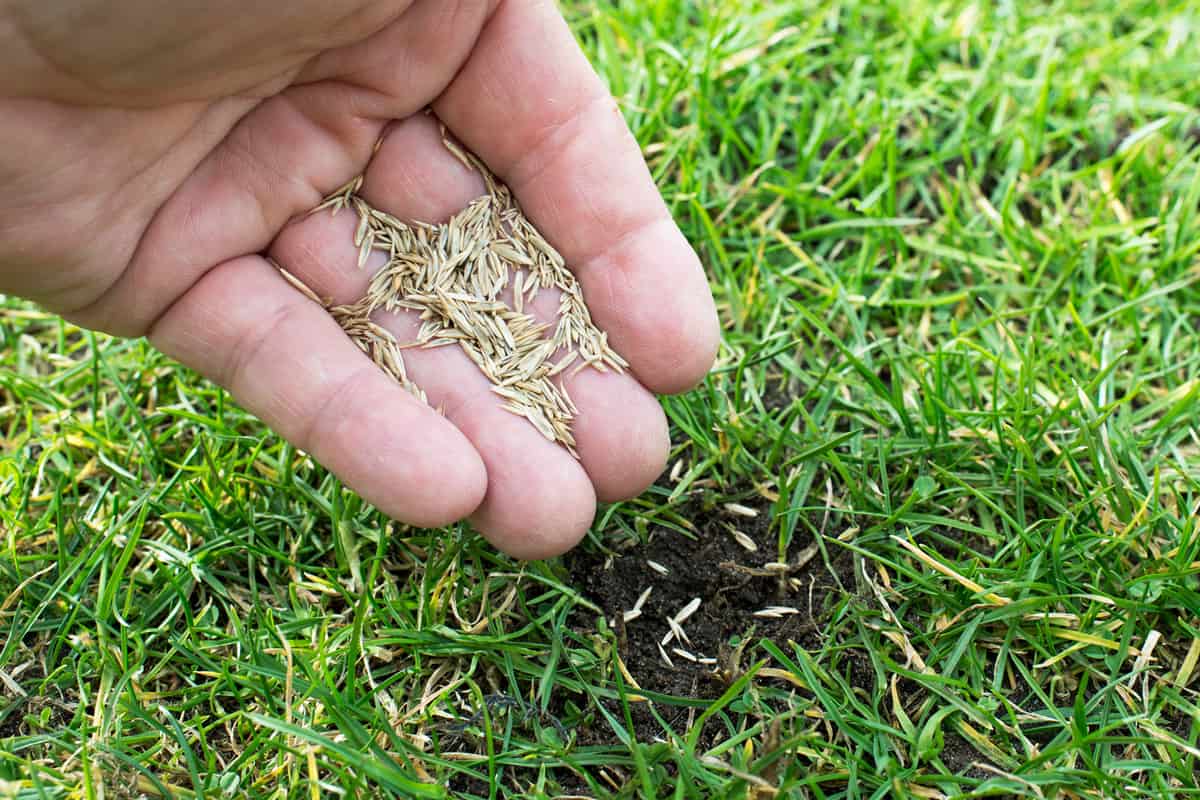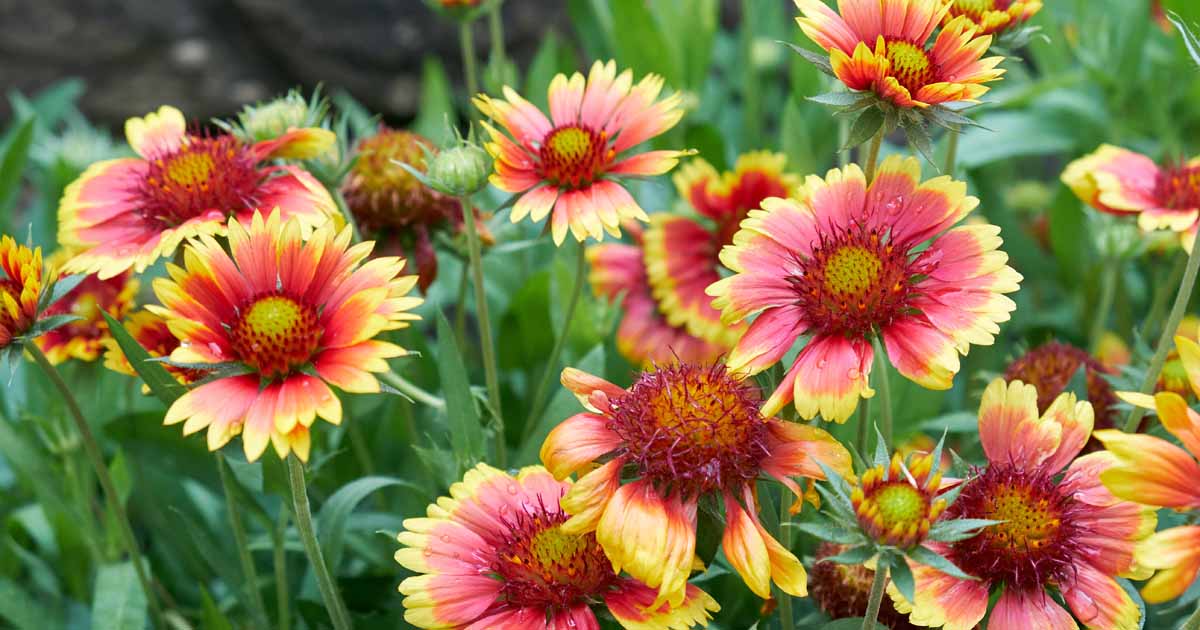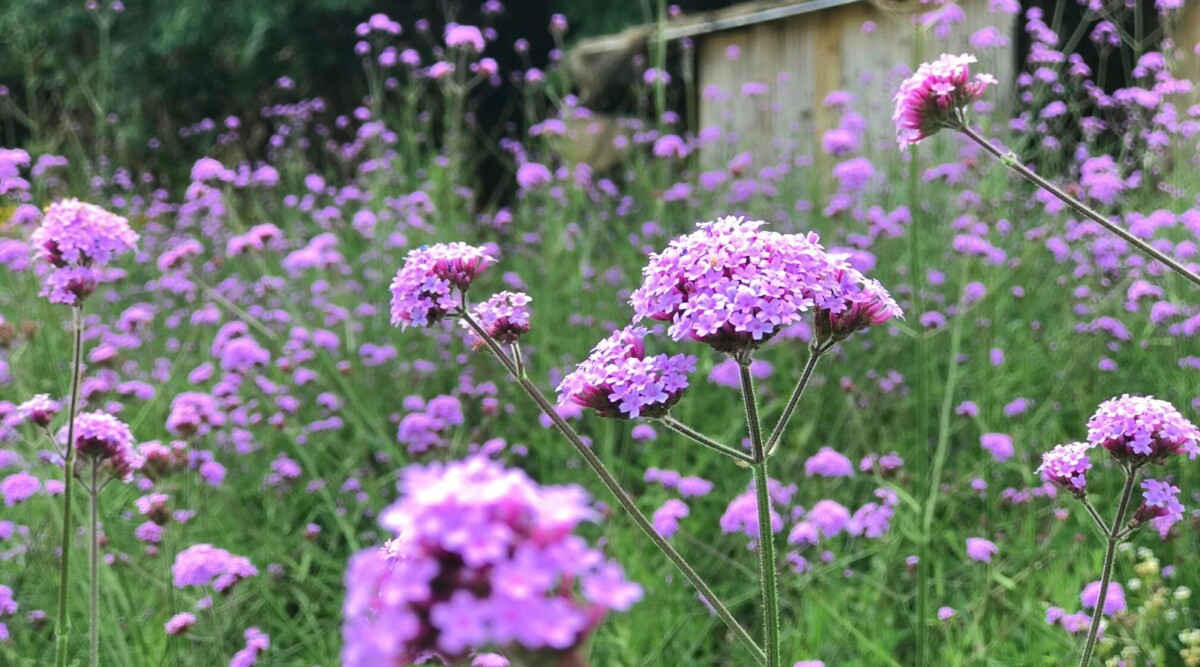Home>Garden Essentials>When To Plant Arugula Seeds


Garden Essentials
When To Plant Arugula Seeds
Modified: March 15, 2024
Looking to start a garden? Learn when to plant arugula seeds for a bountiful harvest. Discover tips and tricks for successful gardening at home.
(Many of the links in this article redirect to a specific reviewed product. Your purchase of these products through affiliate links helps to generate commission for Storables.com, at no extra cost. Learn more)
Introduction
Arugula, also known as rocket, is a leafy green vegetable that offers a peppery and slightly spicy flavor. It is a versatile and nutritious addition to any garden, and growing your own arugula can be a rewarding experience.
In this article, we will delve into the best time to plant arugula seeds and provide you with essential tips for successful cultivation. Whether you have a small backyard garden or a few pots on your balcony, arugula is a great choice for both novice and experienced gardeners.
Arugula thrives in cool-season conditions, and its quick-growing nature makes it an ideal crop for spring and fall planting. The secret to achieving a bountiful harvest lies in understanding the optimal planting time, considering various factors, and following proper care and maintenance practices.
So, let’s dive deeper into the world of arugula cultivation and learn how to plant arugula seeds for a successful garden-to-table experience. Whether you envision fresh arugula in your salads or want to experiment with new culinary creations, this guide will walk you through the process, step by step.
Get ready to embark on a journey of creating a thriving arugula garden that will provide you with delicious, homegrown greens throughout the growing season. Let’s dig in!
Key Takeaways:
- Plant arugula seeds in spring or fall for a bountiful harvest. Consider factors like sunlight, soil quality, and watering needs for successful cultivation.
- Care for arugula seedlings by providing consistent moisture, thinning as needed, and monitoring for pests. Harvest at the right time for fresh, flavorful greens.
Read more: How To Harvest Arugula Seeds
Best Time to Plant Arugula Seeds
Timing is crucial when it comes to planting arugula seeds. This leafy green vegetable thrives in cooler temperatures and is well-suited for spring and fall cultivation. The optimal time to plant arugula seeds is when the weather is mild, and the soil temperature ranges from 45°F to 65°F (7°C to 18°C).
In spring, you can start planting arugula seeds as soon as the soil can be worked and has reached a minimum temperature of 45°F (7°C). This is typically a few weeks before the last frost date in your area. Arugula is a cool-season crop, so it will bolt and turn bitter if exposed to prolonged periods of hot weather. By planting early in spring, you can enjoy a bountiful harvest before temperatures rise.
Fall is another excellent time to plant arugula seeds. Plan to sow the seeds about 6-8 weeks before the first expected frost date in your region. The cooler temperatures and shorter daylight hours of autumn are conducive to arugula growth. With proper care, you can enjoy a late-season harvest and even extend the harvest into winter in milder climates.
Keep in mind that arugula is a relatively fast-growing plant, with a maturity period of just 40-60 days from seed to harvest. This means you can enjoy multiple rounds of arugula crops throughout the growing season by making successive plantings every two to three weeks.
By choosing the appropriate planting time for your arugula, you can ensure higher germination rates, faster growth, and a prolonged harvest period. Now that you know the best time to plant arugula seeds let’s explore some important factors to consider before getting your hands dirty.
Factors to Consider Before Planting
Before you start planting arugula seeds, it’s essential to consider certain factors that can impact the success of your crop. By taking these factors into account, you can create optimal growing conditions for your arugula and increase your chances of a successful harvest. Here are some key factors to consider:
1. Light Requirements: Arugula thrives in full sun to partial shade. It requires at least 4-6 hours of direct sunlight per day. Ensure that you choose a location in your garden that receives adequate sunlight for the best growth and productivity.
2. Soil Quality: Arugula grows best in well-draining soil with a pH level between 6.0 and 6.8. Before planting, prepare your soil by loosening it with a garden fork or tiller. Amend the soil with organic matter, such as compost, to improve its fertility and drainage. Avoid heavy clay soils that can lead to waterlogging, as arugula prefers moist, but not waterlogged, conditions.
3. Watering Needs: Arugula requires consistent moisture to thrive. Regular watering is essential to keep the soil moist, especially during dry periods. However, be cautious not to overwater, as arugula is susceptible to fungal diseases in waterlogged conditions. Aim for 1 inch of water per week, either through rainfall or supplemental irrigation.
4. Temperature Tolerance: Arugula prefers cooler temperatures and can tolerate light frosts. However, it is not winter-hardy in extremely cold climates. If you live in an area with harsh winters, consider growing arugula in a protected environment, such as a greenhouse or cold frame, to extend the growing season.
5. Companion Planting: Arugula benefits from companion planting with certain herbs and vegetables. Plant it alongside crops like lettuce, spinach, or radishes, which have similar growing requirements. These companion plants can provide shade and help control pests.
6. Pests and Diseases: While arugula is generally resistant to pests and diseases, it can attract some common garden pests, such as flea beetles and aphids. Monitor your plants regularly and take appropriate measures, such as using floating row covers or organic pest repellents, to manage any infestations.
By considering these factors before planting arugula, you can create the ideal environment for your crop to flourish. Now that you’re equipped with these essential tips, let’s move on to the steps involved in planting arugula seeds.
Steps to Planting Arugula Seeds
Planting arugula seeds is a relatively simple process that can be done directly in the garden or in containers. Follow these steps to ensure successful germination and healthy growth:
1. Choose the Right Location: Select a well-draining location in your garden that receives at least 4-6 hours of direct sunlight per day. If you’re growing arugula in containers, choose a container with drainage holes and a depth of at least 6 inches.
2. Prepare the Soil: Before planting, prepare the soil by removing any weeds or debris. Loosen the soil to a depth of 6-8 inches using a garden fork or tiller. Add organic matter, such as compost, and work it into the soil to improve its fertility and drainage.
3. Sow the Seeds: Sprinkle the arugula seeds evenly over the prepared soil. Aim for a spacing of about 1-2 inches between seeds. If you’re planting in rows, space the rows about 12-18 inches apart. For container planting, sow the seeds on the surface of the soil and lightly press them down.
4. Cover and Water: Once you’ve sown the seeds, cover them with a thin layer of soil or compost, approximately ¼ inch deep. Gently water the soil to ensure adequate moisture for germination, but avoid overwatering, as it can lead to rotting.
5. Germination and Thinning: Arugula seeds typically germinate within 7-10 days. Once the seedlings have emerged, thin them out to allow for proper airflow and growth. Space the seedlings about 6-8 inches apart, depending on the variety you’re growing.
6. Provide Adequate Water: Consistent moisture is key to ensure healthy growth. Water the arugula plants regularly, keeping the soil evenly moist. Avoid overhead watering to minimize the risk of fungal diseases. Mulching can help retain moisture and deter weed growth.
7. Fertilize as Needed: Arugula is a relatively low-maintenance crop, but it can benefit from a light application of nitrogen-rich fertilizer about 3-4 weeks after planting. Alternatively, you can use organic fertilizers, such as compost tea or fish emulsion, to provide nutrients to the plants.
8. Monitor for Pests and Diseases: Keep an eye out for common pests like flea beetles or aphids. If necessary, use organic pest control methods or insecticidal soap to manage infestations. Remove any diseased or damaged leaves promptly to prevent the spread of diseases.
By following these steps, you can ensure successful germination and healthy growth of your arugula plants. Now let’s move on to the next important aspect—caring for your arugula seedlings.
Plant arugula seeds in early spring or late summer for the best results. This cool-season crop prefers temperatures between 50-70°F for optimal growth. Keep the soil consistently moist and provide partial shade in hot climates.
Caring for Arugula Seedlings
Proper care is essential to promote the healthy growth of arugula seedlings and ensure a bountiful harvest of flavorful greens. Follow these tips to care for your arugula seedlings:
1. Watering: Arugula seedlings require consistent moisture to thrive. Water them regularly, keeping the soil evenly moist but not waterlogged. Use a watering can or a gentle sprayer attachment on your hose to avoid disturbing the delicate seedlings. Water at the base of the plants to minimize moisture on the leaves and reduce the risk of fungal diseases.
2. Mulching: Applying a layer of organic mulch around the base of the arugula seedlings can help regulate soil temperature, retain moisture, and suppress weed growth. Use materials such as straw, shredded leaves, or compost to create a mulch layer about 1-2 inches thick. Make sure to keep the mulch a few inches away from the stems of the seedlings to prevent moisture-related issues.
3. Fertilization: Arugula is a relatively light feeder, but it can benefit from an additional boost of nutrients. Apply a balanced organic fertilizer or compost tea once the seedlings have established their true leaves. Follow the package instructions for dosage and application frequency. Avoid overfertilizing as it can lead to excessive leafy growth and reduced flavor.
4. Thin as Needed: As the seedlings grow, thin them out to provide adequate space for each plant to mature. When the seedlings reach a height of 2-3 inches, carefully remove any overcrowded or weaker seedlings, leaving the healthiest and strongest ones at the recommended spacing of 6-8 inches apart.
5. Pest Management: Be vigilant and monitor your arugula seedlings for pests such as flea beetles or aphids. If you spot any pest activity, you can try using organic pest control methods like neem oil spray, insecticidal soap, or introducing beneficial insects like ladybugs to keep pest populations in check.
6. Mind the Temperature: Arugula prefers cooler temperatures, so it’s crucial to keep an eye on the weather. If temperatures rise above 75°F (24°C), the plants may bolt prematurely and become bitter. Consider providing shade or using row covers during hot spells to protect the seedlings from excessive heat.
7. Regular Harvesting: Start harvesting arugula leaves when they reach a desirable size, usually around 4-6 weeks after planting. Pinch or cut the outer leaves, leaving the center intact to allow for continued growth. Regular harvesting encourages the plants to produce more leaves and prevents them from bolting.
By providing adequate water, nutrients, and protection from pests and extreme temperatures, you can ensure healthy growth and a prolonged harvest period for your arugula seedlings.
Now, let’s move on to the exciting part—harvesting your arugula and enjoying the fruits of your labor.
Read more: When To Plant Rhubarb Seeds
Harvesting Arugula
Harvesting arugula is an exciting part of the gardening process, as it allows you to enjoy the fresh and vibrant flavors of this delicious leafy green. Here are some tips to help you harvest arugula at the peak of its flavor:
1. Selecting the Right Time: Arugula leaves can be harvested at any stage of growth, depending on your preference. For baby arugula, you can start harvesting when the leaves are approximately 2-3 inches long. For more mature leaves, wait until they reach 4-6 inches in length. The choice is yours, and you can experiment with different stages to find your preferred flavor and texture.
2. Harvesting Method: When harvesting arugula, you have two options: selective leaf harvesting or cutting back the entire plant. Both methods are effective, and your choice depends on your desired yield and how you plan to use the arugula.
– Selective Leaf Harvesting: This method involves picking individual leaves as you need them. Simply reach under the leaf cluster, grasp the base of the leaf, and gently pull it away from the plant. Leave the smaller inner leaves to continue growing and provide a continuous harvest over time.
– Cutting Back the entire plant: If you need a larger amount of arugula or want to encourage new growth, you can cut the entire plant back to a few inches above the soil line. Use a pair of sharp scissors or garden shears to make a clean cut. This method allows the plant to regrow and provide a second harvest.
3. Harvesting Tips: Regardless of the method you choose, there are a few additional tips to keep in mind:
– Harvest in the morning: Harvest arugula in the early morning when the leaves are hydrated and at their freshest. This helps retain the crispness and flavor of the harvested leaves.
– Avoid harvesting during hot periods: High temperatures can cause arugula leaves to wilt quickly. Aim to harvest before the sun becomes too intense or wait for cooler parts of the day.
– Regularly harvest to prevent bolting: Arugula has a tendency to bolt and turn bitter when exposed to prolonged heat. Regularly harvesting the outer leaves can help delay this process and extend the harvest period.
4. Storage and Shelf Life: Arugula is best enjoyed shortly after harvesting when its flavors are most vibrant. However, if you have excess arugula, you can store it in the refrigerator to prolong its shelf life. Place the leaves in a plastic bag or a resealable container lined with a paper towel to absorb excess moisture. It can stay fresh for up to a week, but it’s best to use it as soon as possible for optimal taste and texture.
Now that you’re equipped with the knowledge to harvest arugula, get ready to enjoy its peppery goodness in a variety of culinary creations. From salads and sandwiches to pasta dishes and pesto, arugula adds a delightful flavor and vibrant touch to any meal. Happy harvesting!
Note: Make sure to wash your arugula thoroughly before consuming it to remove any dirt or debris that may be present.
Conclusion
Growing arugula from seeds can be a rewarding and enjoyable experience for any gardener. By understanding the best time to plant arugula seeds, considering important factors before planting, following the steps to sow the seeds, and caring for the seedlings, you can cultivate a thriving arugula garden that provides you with a bountiful harvest of tasty greens.
Remember, arugula thrives in cooler temperatures and prefers well-draining soil, adequate sunlight, and consistent moisture. By providing these optimal conditions, you can encourage healthy growth and flavorful leaves.
Harvesting arugula is a delightful experience, and you have the choice to selectively harvest individual leaves or cut back the entire plant to encourage regrowth. Enjoy the fresh, peppery flavor of arugula in salads, sandwiches, pasta dishes, or even homemade pesto.
With each successful harvest, you will gain confidence and satisfaction in your gardening skills. Experiment with different planting times, varieties, and culinary applications to expand your arugula-growing journey.
Remember to consider your local climate and adapt your planting and care practices accordingly. Additionally, stay vigilant for any pests or diseases that might affect your arugula plants and take prompt action to protect your crop.
So, whether you have a garden plot, raised beds, or containers on your balcony, don’t hesitate to start growing arugula from seeds. With a little care and attention, you can enjoy the rewards of fresh, homegrown arugula throughout the growing season.
Get ready to embark on a flavorful journey and experience the joy of growing and harvesting your own arugula. Enjoy the satisfaction of producing fresh, organic greens right in your backyard or on your windowsill. Happy gardening and bon appétit!
Frequently Asked Questions about When To Plant Arugula Seeds
Was this page helpful?
At Storables.com, we guarantee accurate and reliable information. Our content, validated by Expert Board Contributors, is crafted following stringent Editorial Policies. We're committed to providing you with well-researched, expert-backed insights for all your informational needs.















0 thoughts on “When To Plant Arugula Seeds”